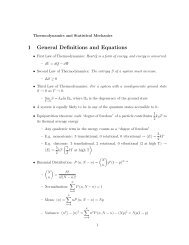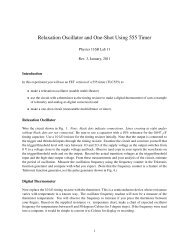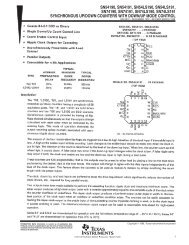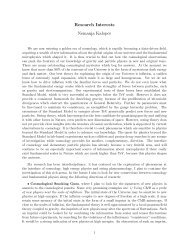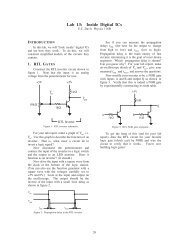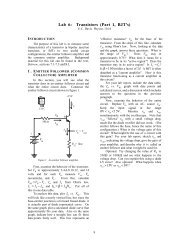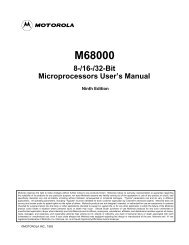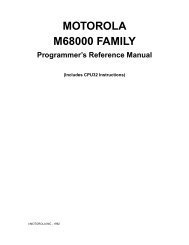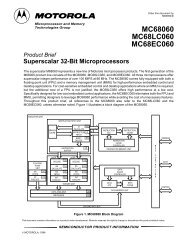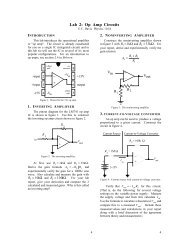Lab 8: Differential Amplifier - Department of Physics - UC Davis
Lab 8: Differential Amplifier - Department of Physics - UC Davis
Lab 8: Differential Amplifier - Department of Physics - UC Davis
You also want an ePaper? Increase the reach of your titles
YUMPU automatically turns print PDFs into web optimized ePapers that Google loves.
4. QUALITY OF OUTPUT<br />
Measure the output signal rise time. To do<br />
this, put a high frequency square wave on the<br />
noninverting input and ground the inverting<br />
input. Adjust the input voltage so the output is<br />
a fairly large amplitude. ("Large amplitude"<br />
means close to the power supply limits.) For<br />
your report, sketch the output and identify and<br />
measure the rise time.<br />
Ideally, an amplifier will be linear. That is,<br />
it will very accurately obey<br />
vout = Av<br />
vin + V<strong>of</strong>fset.<br />
(Compare to the equation for a line, y= mx+<br />
b<br />
from linear algebra.) Real amplifiers approach<br />
linearity only for a limited range <strong>of</strong> output<br />
voltages.<br />
Find the range <strong>of</strong> output voltages for which<br />
this amplifier is reasonably linear. To do this,<br />
put a large amplitude, medium frequency triangle<br />
wave on one <strong>of</strong> the inputs and ground the other.<br />
The output waveform will be very straight where<br />
the amplifier is linear and will appear curved<br />
where it is nonlinear. For your report, sketch a<br />
sample output waveform showing linear and<br />
nonlinear regions and mark the approximate<br />
voltage range where the output is linear.<br />
Last, increase the gain <strong>of</strong> the amplifier and<br />
see if this affects its linearity. To do this, short<br />
out the emitter resistors. Measure the gain (in<br />
noninverting differential mode only) <strong>of</strong> this new<br />
circuit and repeat the linearity check described<br />
above. R E<br />
provides negative feedback which<br />
should improve linearity and reduce gain. Is this<br />
what you observe? For your lab report, include<br />
the new measured gain, a new sketch <strong>of</strong> the<br />
output indicating nonlinearities, and a brief<br />
discussion <strong>of</strong> how R E<br />
affects linearity and gain.<br />
11



